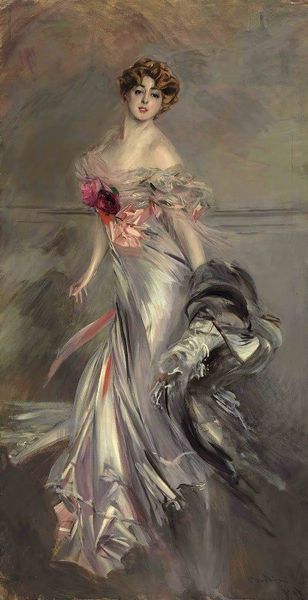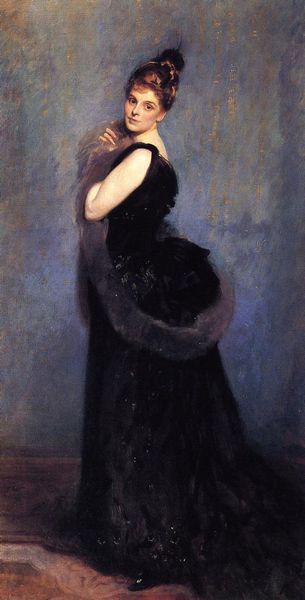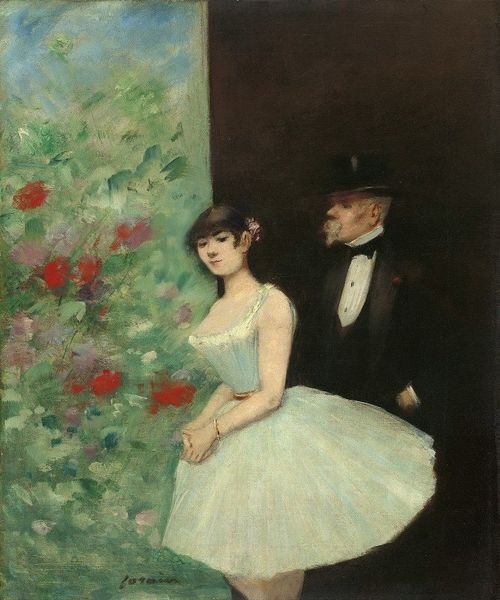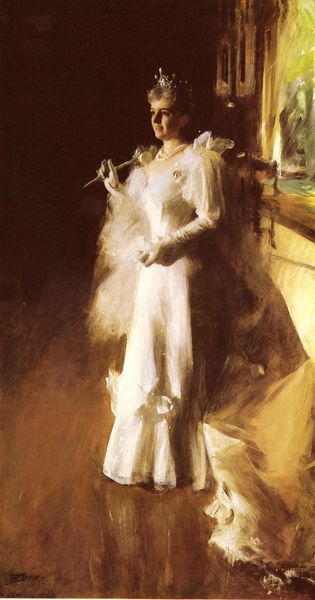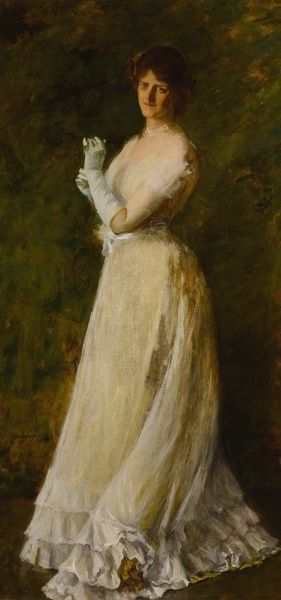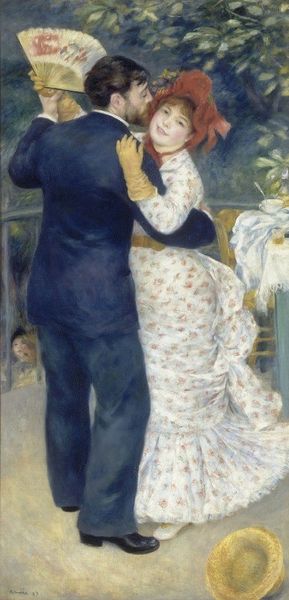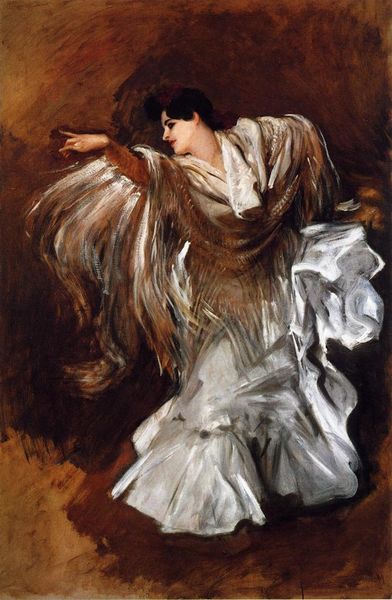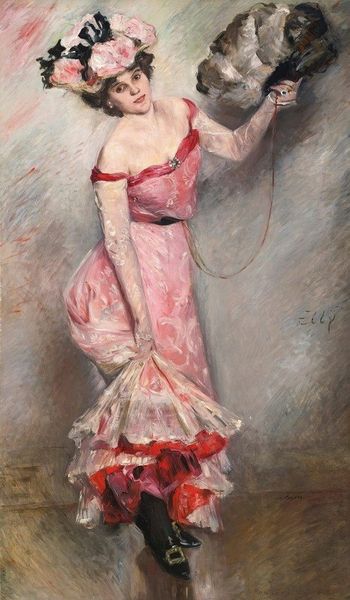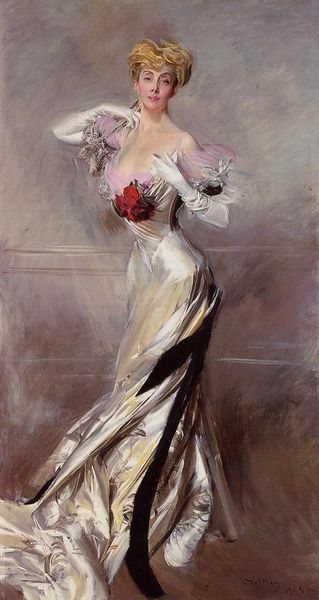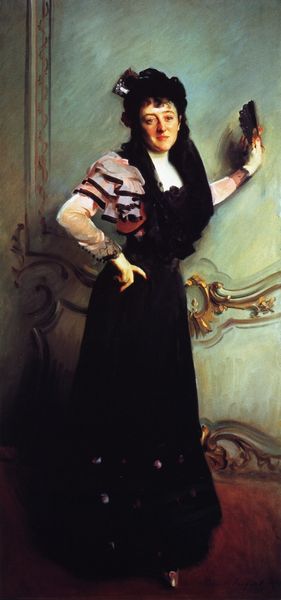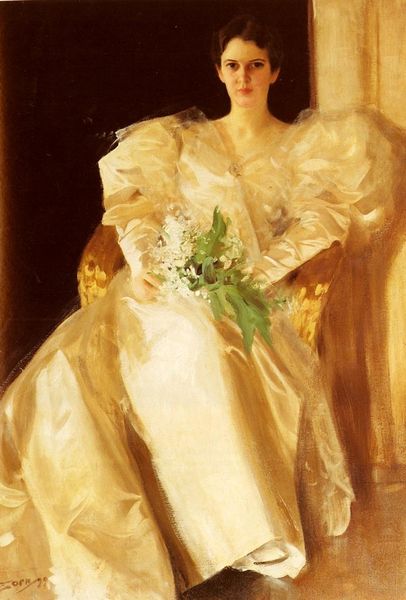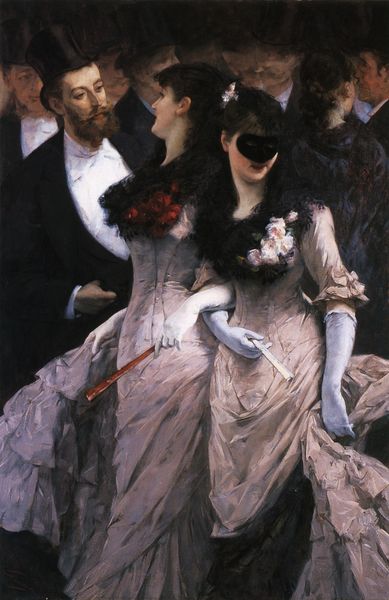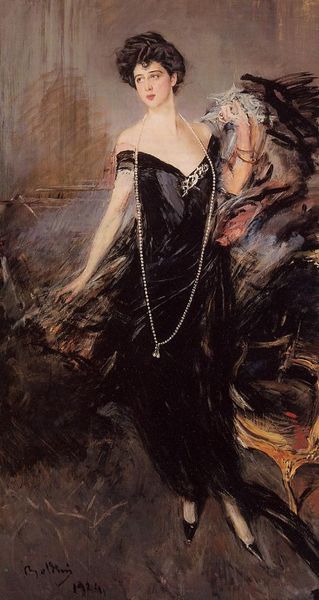
Dimensions: 90 x 180 cm
Copyright: Public domain
Curator: Looking at "Dance in the City," a radiant oil painting from 1883 by Pierre-Auguste Renoir, I’m immediately struck by its almost palpable sense of joy. Editor: Yes, it does exude a certain… escapism. I find myself initially noticing the woman’s dress, the texture seems to embody privilege and luxury in the midst of social change in 19th-century France. Curator: Precisely. Renoir was adept at capturing the vibrancy of Parisian life, but always within a context of the emerging bourgeoisie, a reflection of his core audience. The brushstrokes, so typical of Impressionism, feel loose and lively, don't they? Almost vibrating. Editor: Absolutely. And the woman's averted gaze, while romantic, speaks volumes about gendered power dynamics. She appears demure, her agency somewhat eclipsed by her male partner and her elegant attire. I wonder, was Renoir celebrating or subtly critiquing this societal tableau? Curator: It's always hard to definitively ascribe intent. It is thought that the model here, Suzanne Valadon, represents an attempt to immortalize the modern Parisian woman, elevating her in ways that might reflect romanticism's own aims within contemporary portraiture. Editor: Maybe, but there's also the romanticization, if not the outright idealization, of leisure. Can we truly divorce this image from the realities of economic disparities? It feels tone-deaf when considering class and accessibility. Is this escapism deliberately exclusive? Curator: A pertinent point. It speaks to the enduring dilemma: Can art truly be separated from its context? In Renoir's case, it seems forever tethered to the complexities of Parisian high society and the art world that validated such scenes. Editor: Indeed. The beauty is undeniable, but it also prompts critical inquiry, forcing us to consider who is allowed to partake in moments of such airy levity, and at what cost. Curator: In examining it, "Dance in the City" seems to offer insight, but also requires interrogation. It is both an exquisite impression and a carefully considered study. Editor: Right, a mirror reflecting the society it portrays—distorted perhaps, but never silent. It makes me wonder what other stories the work implies beyond the beautiful dancing.
Comments
No comments
Be the first to comment and join the conversation on the ultimate creative platform.

